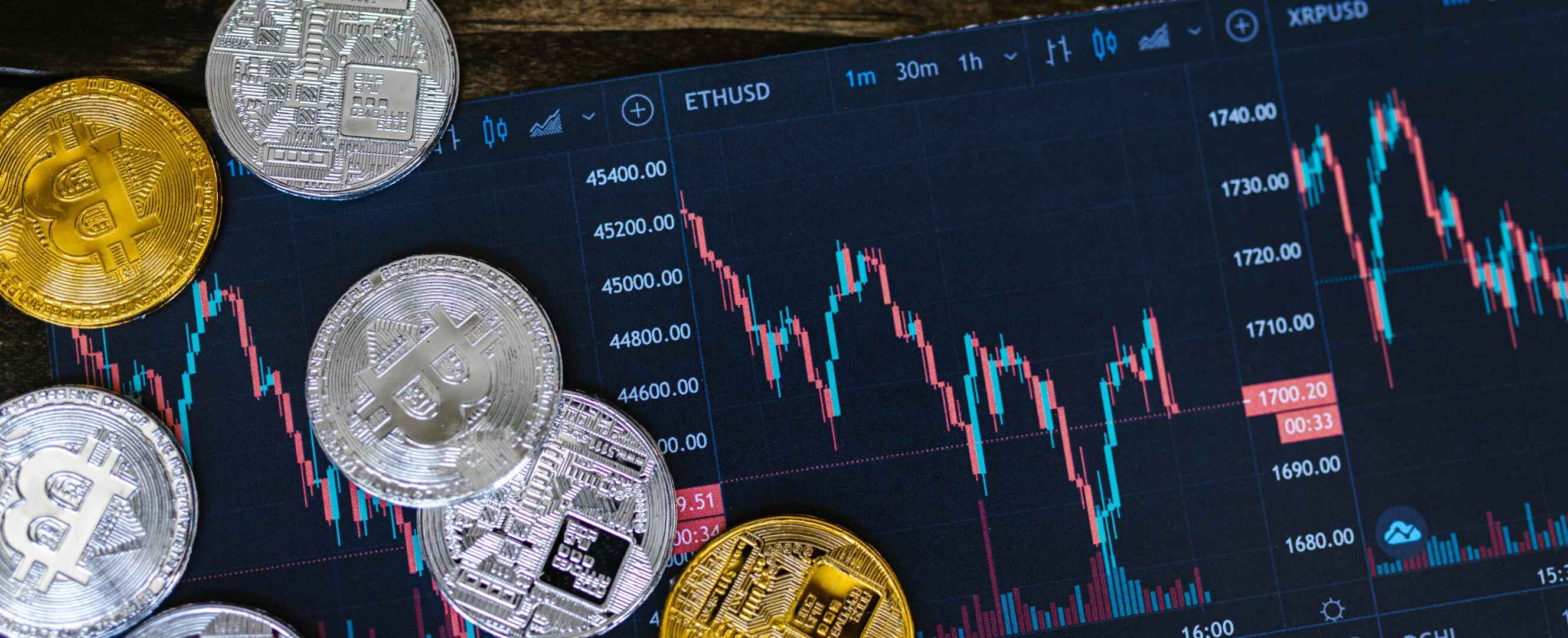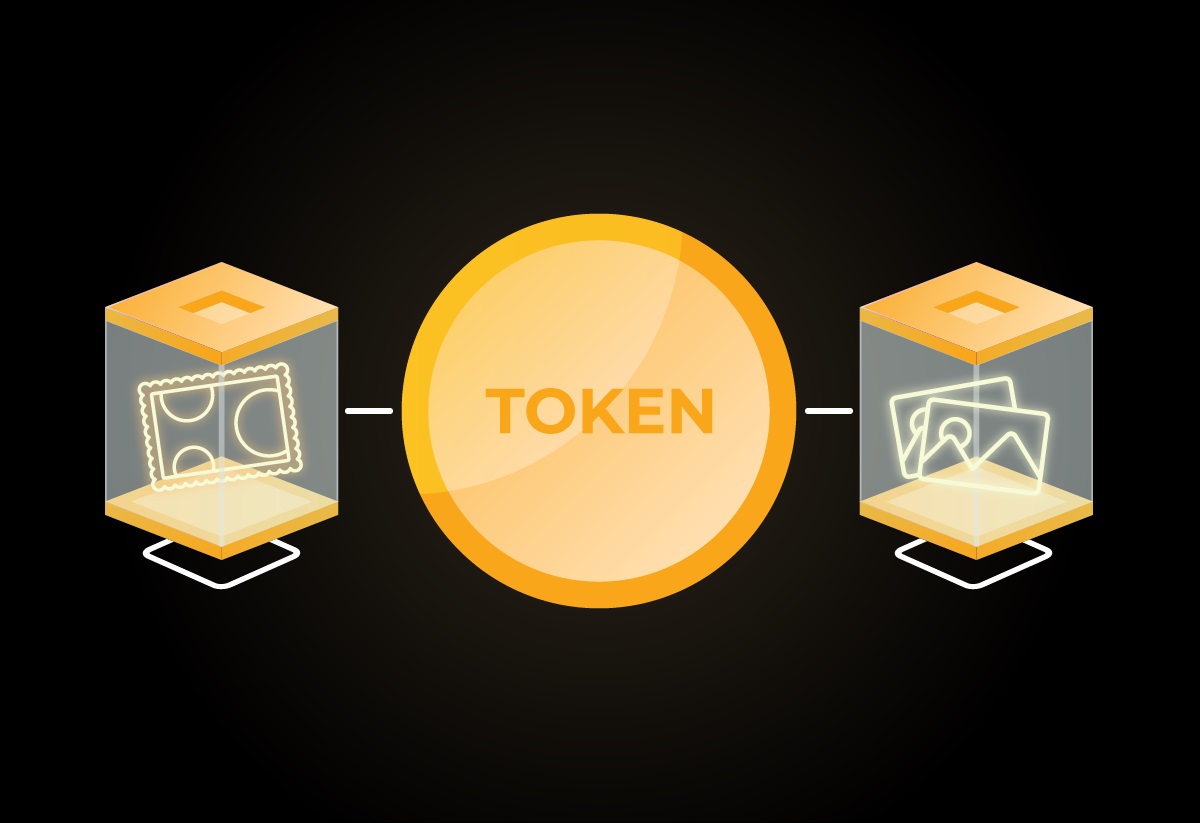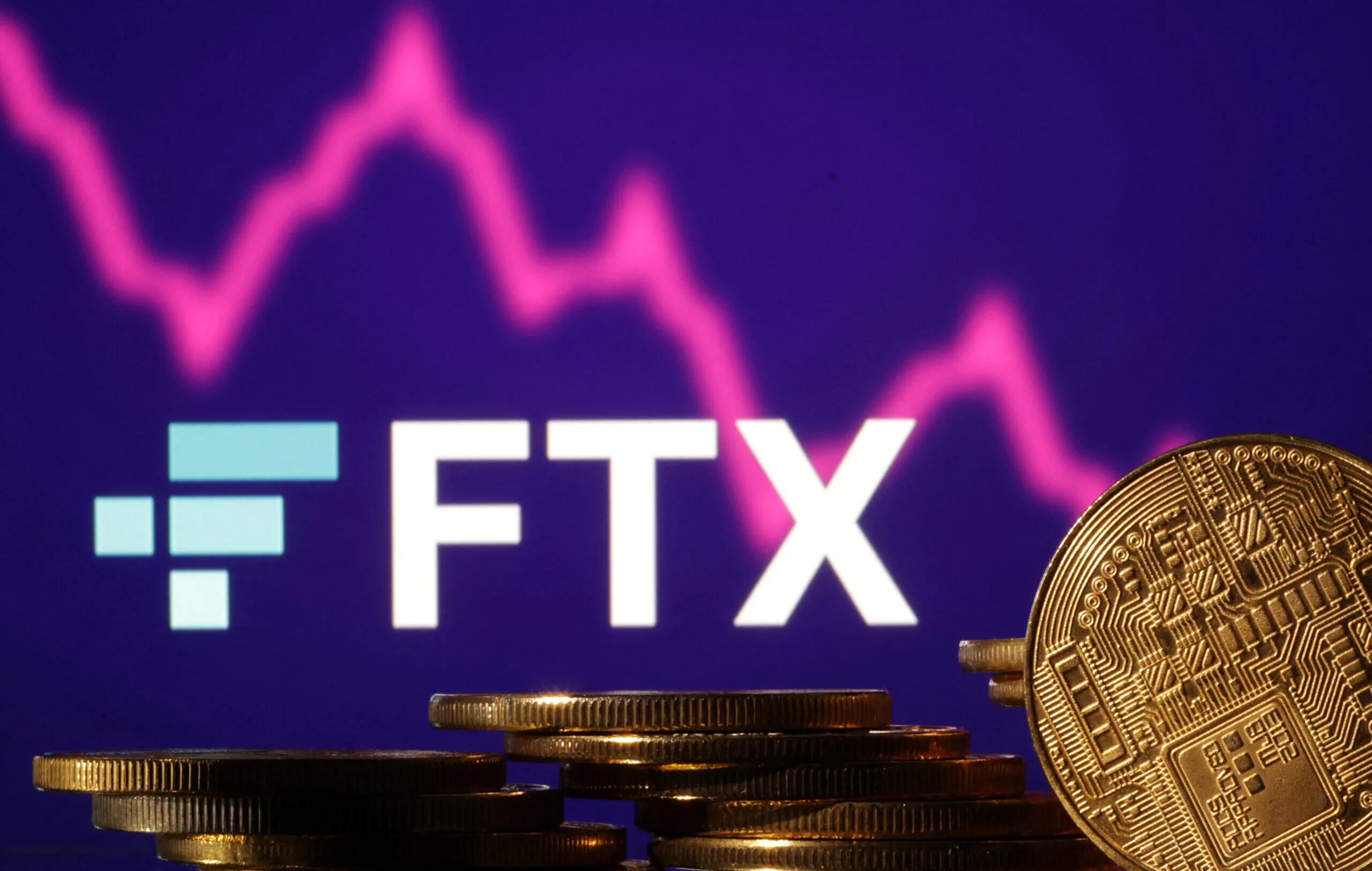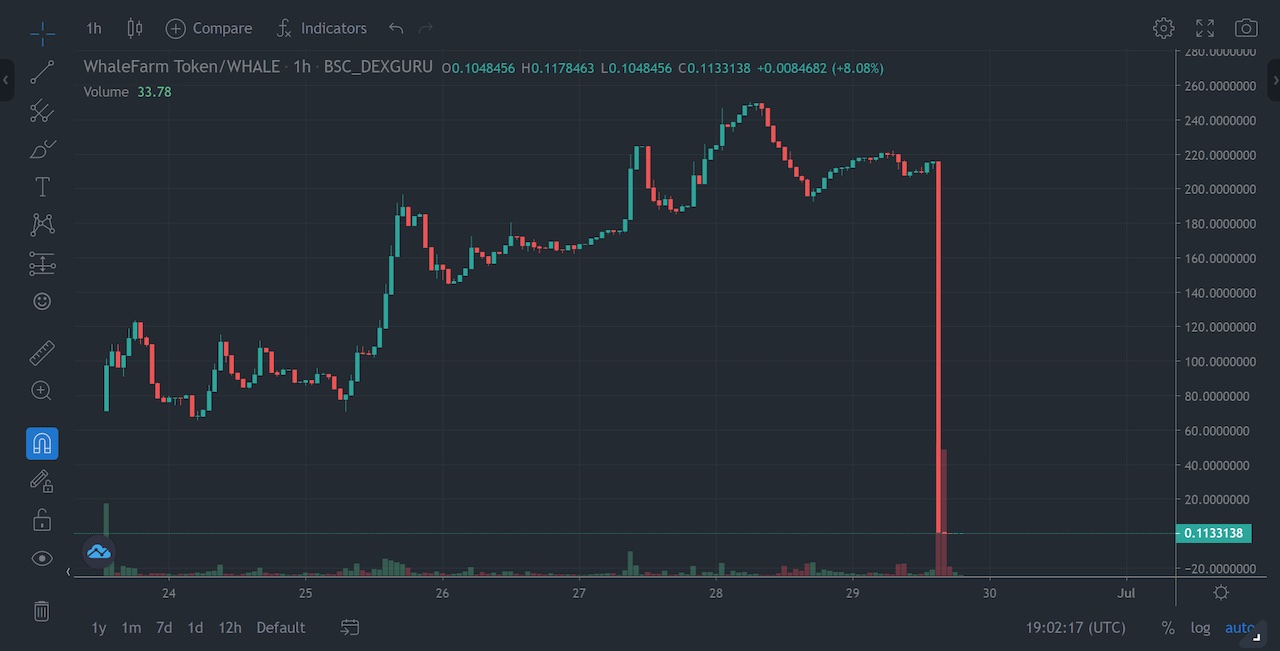Introduction
The crypto market has witnessed significant volatility in recent times, leaving investors and enthusiasts wondering when it will recover. With the sudden drop in cryptocurrency prices and the subsequent stagnation, many are eager to understand the factors influencing the market recovery and predict its timeline.
In this article, we will delve into the current state of the crypto market and explore the various factors that are likely to influence its recovery. Additionally, we will analyze past market recoveries to gain insights into potential patterns and trends. Furthermore, we will seek expert opinions and predictions to provide a comprehensive view of what lies ahead for the crypto market.
It’s essential to understand that the crypto market is highly volatile and influenced by multiple variables. The recovery process can be unpredictable, and it’s crucial for investors to stay informed and adapt their strategies accordingly.
While we cannot provide a definitive answer to when the crypto market will fully recover, this article aims to equip you with the necessary knowledge and insights to make informed decisions during this uncertain period.
So, let’s dive in and explore the present state of the crypto market while examining the factors that play a role in its recovery.
Understanding the Current State of the Crypto Market
The crypto market is currently experiencing a period of uncertainty and volatility. In recent months, we have witnessed significant fluctuations in the prices of popular cryptocurrencies such as Bitcoin, Ethereum, and others. These fluctuations have left investors puzzled and seeking answers.
One of the main reasons for the current state of the crypto market is the increased regulatory scrutiny. Governments around the world are grappling with how to regulate cryptocurrencies and initial coin offerings (ICOs). This regulatory uncertainty has led to hesitancy among investors, causing a decline in overall market sentiment.
Furthermore, the market has also been influenced by external factors such as global economic conditions and geopolitical events. For example, when there is instability in traditional financial markets or tensions between countries, investors tend to seek safe-haven assets like gold or U.S. Treasury bonds rather than cryptocurrencies.
Additionally, the rise of decentralized finance (DeFi) has brought both opportunities and challenges to the crypto market. While DeFi has shown immense potential for innovation and disruption in the financial industry, it has also led to concerns about security, transparency, and regulatory framework.
Moreover, investor psychology plays a significant role in the current state of the market. Cryptocurrencies are highly speculative assets, and investor sentiment can quickly shift from optimism to fear. FUD (fear, uncertainty, and doubt) can spread rapidly through social media platforms and influence market sentiment, leading to panic selling and further price depreciation.
It’s important to note that the crypto market operates 24/7, unlike traditional financial markets. This constant trading and price discovery can contribute to increased volatility and sudden price movements.
Despite the current challenges, it’s crucial to recognize that the crypto market is still in its early stages of development. This means that it is prone to wild price swings and uncertain market conditions. However, it also presents significant opportunities for those who can navigate the volatility and identify promising projects.
In the next section, we will explore the various factors that can influence the recovery of the crypto market and shed light on how these factors have played out in the past.
Factors Influencing the Recovery of the Crypto Market
The recovery of the crypto market is influenced by a variety of factors, both internal and external. Understanding these factors can provide valuable insights into the potential timeline and trajectory of the market’s recovery.
One of the primary factors influencing the crypto market’s recovery is market sentiment. Investor confidence and perception of the market significantly impact the demand for cryptocurrencies. When positive market sentiment takes hold, investors are more willing to invest in cryptocurrencies, leading to increased buying pressure and potential price appreciation.
Regulatory developments also play a crucial role in the recovery of the crypto market. Clarity and certainty in regulatory frameworks can boost investor confidence and encourage institutional participation in the market. Conversely, unfavorable regulatory actions or ambiguity can generate uncertainty and hinder market recovery.
Technological advancements and adoption are additional factors that can influence the recovery of the crypto market. The development of innovative solutions, such as scalability improvements, enhanced security measures, and user-friendly interfaces, can attract new participants to the market. Moreover, increased adoption of cryptocurrencies by businesses and individuals can contribute to a more robust and resilient market.
Market liquidity is another essential factor in the recovery of the crypto market. Adequate liquidity ensures that buyers and sellers can transact without significant price slippage. Higher liquidity provides stability and can attract more institutional investors who require large trading volumes.
Furthermore, macroeconomic factors such as global economic conditions and monetary policies can impact the crypto market’s recovery. Economic stability, low inflation rates, and accommodative monetary policies can create an environment conducive to investment and resilience in the crypto market. Conversely, economic recessions or tightening monetary policies may lead to a decline in investor confidence and a prolonged recovery period.
Social and media influence cannot be underestimated when considering the factors influencing the recovery of the crypto market. Positive news, endorsements from influential figures, and increased media coverage can create positive sentiment and drive market recovery. On the other hand, negative news or unfavorable media narratives can have detrimental effects on investor confidence and further delay the market’s recovery.
Finally, it’s important to note that the interconnected nature of the crypto market with other financial markets can also affect its recovery. Events taking place in traditional financial markets, such as stock market crashes or economic crises, can spill over into the crypto market and impact investor sentiment.
By understanding these various factors, investors can gain a deeper insight into the dynamics of the crypto market’s recovery. In the next section, we will analyze past crypto market recoveries to identify potential patterns and trends.
Analysis of Past Crypto Market Recoveries
Examining past crypto market recoveries can provide valuable insights into potential patterns and trends that may influence the current recovery. While the crypto market’s historical performance is not indicative of future outcomes, it can help us understand the dynamics and potential timelines.
One notable example of a crypto market recovery is the recovery following the market crash of 2018. After reaching record highs in late 2017, the market experienced a significant downturn in 2018, with prices dropping by more than 80% in some cases. However, over time, the market gradually recovered, and many cryptocurrencies reached new all-time highs in subsequent years.
The recovery of the crypto market in 2018 was influenced by various factors. Improved regulatory clarity, increased institutional adoption, and technological advancements played essential roles in restoring investor confidence. Additionally, the market benefited from increased awareness and understanding of cryptocurrencies among the general public.
Another notable example of a crypto market recovery is the recovery following the market crash caused by the COVID-19 pandemic in early 2020. In March 2020, crypto prices plummeted alongside traditional financial markets due to widespread panic and uncertainty. However, the crypto market quickly rebounded and experienced a strong recovery.
Several factors contributed to the swift recovery of the crypto market in 2020. Demand for digital assets as a hedge against economic instability, the increasing recognition of cryptocurrencies as a store of value, and the continuation of technological advancements all played important roles. Additionally, the growing acceptance of cryptocurrencies by institutional investors, as demonstrated by major companies investing in Bitcoin, further boosted market confidence.
While these past recoveries provide some insights, it’s crucial to note that each market cycle is unique, and recovery timelines can vary. Furthermore, the crypto market’s volatility and sensitivity to external factors make it challenging to predict the exact duration and magnitude of recovery.
By studying historical recoveries, investors can gain a better understanding of the potential stages and milestones that may be encountered during the current recovery. However, it’s important to approach the analysis with caution and always consider the current market conditions, regulatory environment, and technological advancements.
In the next section, we will explore expert opinions and predictions to supplement our analysis and provide a broader perspective on the recovery timeline.
Expert Opinions and Predictions on the Recovery Timeline
When it comes to predicting the recovery timeline of the crypto market, there is a wide range of opinions among experts and analysts. While no one can accurately predict the future with certainty, these expert opinions can offer valuable insights into the potential trajectory of the market’s recovery.
Some experts believe that the recovery of the crypto market is on the horizon and will likely happen in the coming months. They point to factors such as increasing institutional adoption, the emergence of new use cases, and growing acceptance of cryptocurrencies by mainstream financial institutions as indicators of a forthcoming recovery.
Others are more cautious and expect a more gradual recovery over a longer time frame. They emphasize the need for regulatory clarity, continued technological advancements, and sustained market stability as crucial factors for a sustainable recovery.
It’s worth noting that market sentiment and investor behavior are significant drivers of the recovery timeline. Positive news, industry developments, and increased investor confidence can expedite the recovery process. On the other hand, negative market sentiment, regulatory concerns, and investor skepticism can prolong the recovery period.
One common theme among experts is the notion that the recovery of the crypto market is ultimately tied to the broader adoption and integration of blockchain technology. As blockchain continues to revolutionize various industries and gain mainstream acceptance, the demand for cryptocurrencies and the overall health of the market is likely to improve.
It’s important to approach expert opinions and predictions with a critical mindset and consider multiple perspectives. No single prediction can accurately capture the complexity and unpredictability of the crypto market. Factors such as market manipulation, technological breakthroughs, and global events can shift the dynamics and alter the recovery timeline.
Ultimately, investors should rely on their own research, risk tolerance, and investment strategies rather than solely relying on expert opinions. Diversification, disciplined risk management, and a long-term perspective are key principles to navigate the market’s volatility and optimize the potential for returns.
In the next section, we will explore steps that investors can take during the market downturn to mitigate risks and position themselves for the recovery.
Steps to Take During the Market Downturn
Navigating a market downturn in the crypto market requires a careful approach and strategic decision-making. Here are some steps that investors can consider taking during a market downturn:
1. Review and adjust your investment strategy: Take the time to reassess your investment goals and risk tolerance. Consider reallocating your portfolio to more stable assets or diversifying across different cryptocurrencies to minimize risk.
2. Stay informed: Stay up to date with the latest news and developments in the crypto market. Follow reputable sources, join online communities, and engage in discussions to gain insights and make informed decisions.
3. Focus on long-term goals: Remember that the crypto market is highly volatile, and short-term price fluctuations are to be expected. Instead of getting caught up in day-to-day price movements, focus on long-term trends and the potential of the underlying technology.
4. Consider dollar-cost averaging: Rather than investing a lump sum, consider implementing a dollar-cost averaging strategy. This involves investing a fixed amount of money at regular intervals, regardless of the market price. This approach helps mitigate the impact of market volatility and allows for better purchasing power over time.
5. Continue learning and improving: Use the market downturn as an opportunity to educate yourself further about cryptocurrencies and blockchain technology. Explore new projects, understand their fundamentals, and evaluate their potential for long-term success.
6. Assess your risk management strategies: Evaluate your risk management techniques, such as setting stop-loss orders or using hedging strategies. Determine if adjustments are necessary to protect your investments during volatile market conditions.
7. Exercise caution with leverage and margin trading: While leverage can amplify profits during market upswings, it also increases the risk of losses during downturns. Assess your risk tolerance before engaging in leverage or margin trading and be mindful of the potential consequences.
8. Secure your assets: Ensure that your crypto assets are stored securely in cold wallets or hardware wallets. Implement strong security measures, such as two-factor authentication, to protect your investments from potential hacking attempts.
Remember that no investment strategy is foolproof, and there are always risks involved. It’s essential to do your own research, seek advice from professionals if needed, and make decisions based on your own financial goals and risk tolerance.
In the next section, we will explore the signs to look for that may indicate the recovery of the crypto market is imminent.
Signs to Look for to Indicate Market Recovery is Imminent
Identifying signs that indicate a market recovery is imminent can help investors prepare and position themselves to capitalize on potential opportunities. While the crypto market is known for its volatility, certain indicators can provide insights into a potential recovery:
1. Stabilizing prices: Keep an eye on the price movements of cryptocurrencies. Gradual stabilization or a consolidation phase with less extreme price fluctuations could be an early indication of a market bottom and an impending recovery.
2. Increase in trading volumes: Rising trading volumes suggest renewed interest and activity in the market. Higher trading volumes indicate increased liquidity and could indicate growing confidence among investors.
3. Positive regulatory developments: Pay attention to regulatory news and developments. Positive regulatory developments, such as clear guidelines and favorable legislation, can boost investor confidence and signal an upcoming recovery.
4. Improved market sentiment: Watch for a shift in market sentiment from fear and uncertainty to optimism and excitement. Positive news, endorsements from influential figures, and a general feeling of positivity within the crypto community can indicate a changing sentiment and potential recovery.
5. Increased institutional involvement: Monitor the involvement of institutional investors in the crypto market. As more traditional financial institutions recognize the potential of cryptocurrencies and blockchain technology, their entry into the market can signal increased confidence and pave the way for wider adoption.
6. Technological advancements and project developments: Keep an eye on the progress of various blockchain projects. Major updates, new partnerships, and innovative solutions being implemented by projects can generate positive market sentiment and indicate an imminent recovery.
7. Positive market correlations: Observe the relationship between the crypto market and other financial markets. If the crypto market starts to show a positive correlation with traditional markets, such as a rally in stocks or a decline in bond yields, it could suggest an imminent recovery.
8. Increase in fundamental metrics: Analyze the fundamental metrics of cryptocurrencies and the ecosystem. Look for indicators such as growing user adoption, an increase in transaction volume, and improvement in scalability and security. These positive fundamental metrics can support future price growth and market recovery.
While these signs can provide insights into an imminent market recovery, it’s important to exercise caution and conduct thorough research. Market recoveries are dynamic and can be influenced by various factors, both internal and external.
Keep in mind that the crypto market is highly speculative, and investing in cryptocurrencies carries risks. It’s crucial to assess your own risk tolerance, diversify your portfolio, and consult with financial professionals if needed.
In the next section, we will discuss strategies for capitalizing on the recovery of the crypto market.
Strategies for Capitalizing on the Crypto Market Recovery
As the crypto market begins to show signs of recovery, investors can consider implementing various strategies to capitalize on the potential opportunities that arise. Here are some strategies to help navigate the market and maximize returns:
1. Diversify your portfolio: Spreading your investments across different cryptocurrencies can help mitigate risk and increase the potential for returns. Consider investing in a mix of established cryptocurrencies and promising projects with strong fundamentals.
2. Focused research and due diligence: Conduct thorough research on cryptocurrencies and projects before making investment decisions. Evaluate their technological features, development roadmap, market potential, and team expertise. In-depth research can help identify projects with a higher probability of success.
3. Take advantage of lower prices: Market downturns often present buying opportunities for investors. Consider accumulating cryptocurrency assets at discounted prices during the recovery phase. Dollar-cost averaging can be an effective strategy to gradually build your position.
4. Monitor market trends: Stay informed about market trends, industry developments, and emerging use cases. Look for sectors within the crypto market that show potential for growth and adoption, such as decentralized finance (DeFi), non-fungible tokens (NFTs), or blockchain interoperability.
5. Manage risk effectively: Implement risk management strategies, such as setting stop-loss orders or establishing a diversified exit strategy. Don’t invest more than you can afford to lose and be prepared for potential market volatility.
6. Consider long-term investments: While short-term gains can be enticing, it’s essential to take a long-term perspective when investing in cryptocurrencies. Focus on projects with solid fundamentals and long-term viability rather than chasing quick profits.
7. Keep emotions in check: Emotional decision-making can lead to irrational investment choices. Stick to your investment plan and avoid making impulsive decisions based on market hype or fear.
8. Stay updated on regulatory developments: Regulatory changes can significantly impact the crypto market. Stay informed about evolving regulations and compliance requirements to ensure your investments align with legal frameworks.
9. Consider staking and earning passive income: Explore staking and yield-generating opportunities through decentralized finance (DeFi) protocols. By locking up your crypto assets, you can earn passive income in the form of interest or rewards while supporting the network.
10. Stay informed and adapt: Continuously educate yourself about the crypto market and emerging technologies. Stay updated with news, follow influential voices in the industry, and adapt your strategies as market conditions evolve.
Remember that investing in cryptocurrencies carries risks, and there are no guarantees of profits. It’s crucial to conduct thorough research, assess your risk tolerance, and seek professional advice if needed.
In the next section, we will summarize the key points discussed throughout the article to provide a comprehensive understanding of the crypto market recovery.
Conclusion
The crypto market’s recovery is a topic of great interest and speculation among investors and enthusiasts. While predicting the exact timeline of the recovery is challenging, understanding the current state of the market, the factors influencing its recovery, and the strategies to navigate through market downturns can help investors make informed decisions.
The current state of the crypto market is characterized by volatility, regulatory uncertainty, and external factors such as global economic conditions. However, it is important to recognize that the crypto market is still in its early stages of development, presenting both opportunities and challenges.
Factors such as market sentiment, regulatory developments, technological advancements, and institutional involvement can influence the recovery of the crypto market. Analyzing past market recoveries and considering expert opinions and predictions can provide insights into potential patterns and trends.
During market downturns, investors should focus on reviewing and adjusting their investment strategies, staying informed, and considering steps such as dollar-cost averaging and diversification. It’s important to exercise caution, conduct thorough research, and manage risks effectively.
Signs that indicate an imminent market recovery include stabilizing prices, increasing trading volumes, positive regulatory developments, improved market sentiment, increased institutional involvement, technological advancements, positive market correlations, and improved fundamental metrics.
To capitalize on the recovery, investors can consider strategies such as portfolio diversification, focused research and due diligence, taking advantage of lower prices, monitoring market trends, managing risk effectively, considering long-term investments, staying updated on regulatory developments, and exploring staking and passive income opportunities.
It’s crucial to remember that investing in cryptocurrencies carries risks, and market conditions can change rapidly. Investors should stay informed, adapt their strategies, and make decisions based on their own risk tolerance and financial goals.
By understanding the dynamics of the crypto market and implementing informed strategies, investors can navigate through market downturns and position themselves to potentially benefit from the recovery of the crypto market.

























